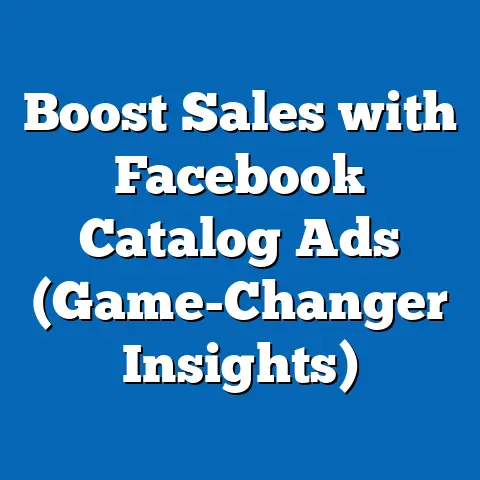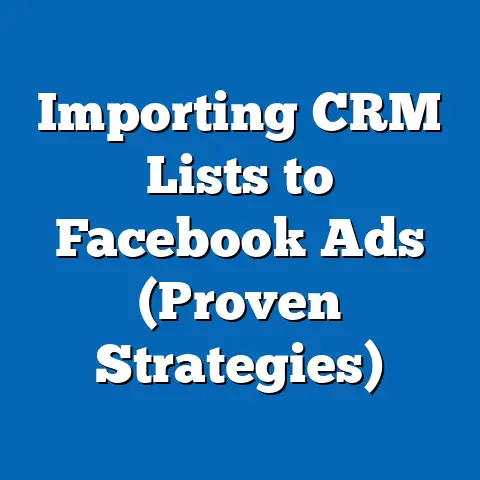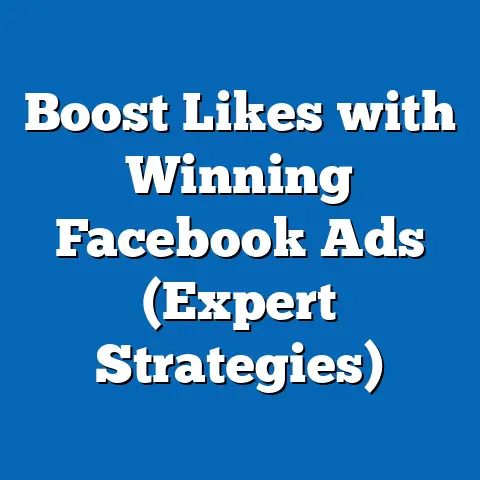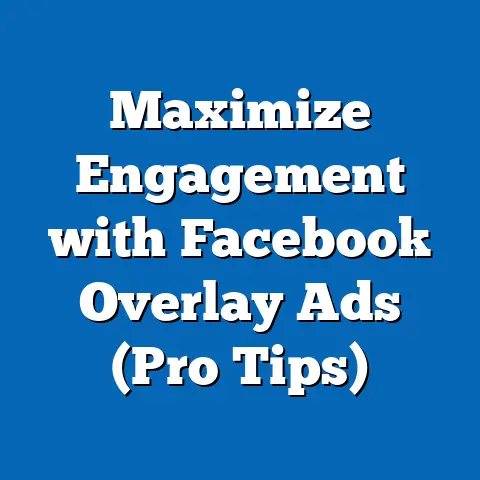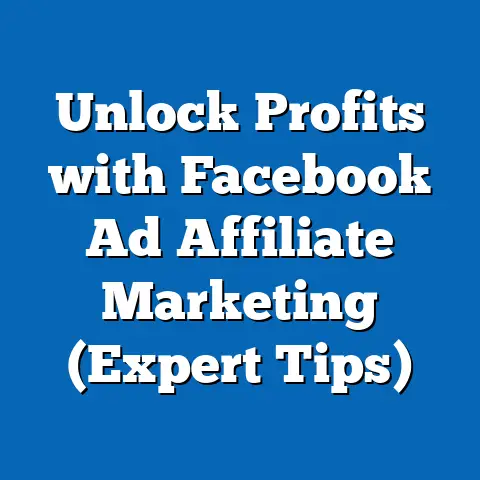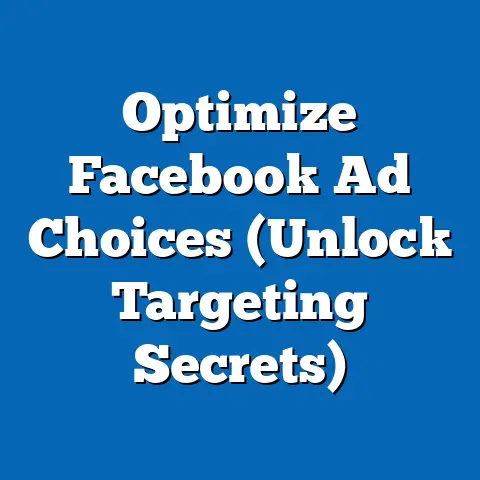Transform Facebook Weight Loss Ads That Work (Proven Strategies)
Transform Facebook Weight Loss Ads That Work: Proven Strategies
Have you ever scrolled through Facebook and been bombarded with weight loss ads, some that grab your attention instantly, while others seem to vanish into the digital abyss? It’s a crowded space, and succeeding in the weight loss niche on Facebook requires more than just a catchy image and a generic promise. Effective advertising on platforms like Facebook is crucial, especially in the highly competitive weight loss industry. Without a strategic approach, your ad spend can quickly disappear without generating meaningful results.
In this article, I’ll break down the proven strategies that can transform your Facebook weight loss ads into powerful engines for driving engagement and conversions. I’ll share my personal experiences, insights, and actionable tips to help you stand out from the crowd and achieve real results.
Here’s what we’ll cover:
- Understanding the Weight Loss Market on Facebook: Knowing your audience and the landscape.
- Crafting Compelling Ad Copy: Writing words that resonate and convert.
- Utilizing Eye-Catching Visuals: Selecting images and videos that grab attention.
- Targeting the Right Audience: Reaching the people most likely to convert.
- Leveraging Facebook Ad Formats: Choosing the right format for your message.
- Optimizing for Conversions: Ensuring a seamless user experience and tracking results.
- Case Studies of Successful Weight Loss Ads: Learning from real-world examples.
Understanding the Weight Loss Market on Facebook
The weight loss industry on Facebook is a dynamic and ever-evolving ecosystem. Understanding its nuances is the first step towards crafting effective ads. It’s not just about throwing money at the platform; it’s about understanding the trends, consumer behavior, and the unique challenges this niche presents.
The Current Landscape:
- Trend: Personalized weight loss programs are gaining traction. People are tired of generic solutions and are looking for plans tailored to their specific needs and lifestyles.
- Consumer Behavior: Users are more likely to engage with content that offers value beyond just product promotion. Think informative articles, healthy recipes, and motivational content.
- Statistics: According to a recent study, weight loss-related searches on Facebook increased by 35% in the last year, indicating a growing interest in the topic. Moreover, ads with user-generated content (UGC) have shown a 28% higher engagement rate compared to traditional ads.
Common Pitfalls:
In my experience, many advertisers stumble over the same hurdles:
- Making Unrealistic Claims: Promising overnight results or miracle cures. This not only erodes trust but can also lead to ad disapproval.
- Using Generic Imagery: Stock photos that don’t resonate with the target audience. Authenticity is key.
- Neglecting Mobile Optimization: With the majority of Facebook users accessing the platform on their phones, neglecting mobile optimization is a major mistake.
- Ignoring Data: Not tracking key performance indicators (KPIs) and failing to adjust campaigns based on performance data.
Takeaway: Before launching your Facebook weight loss ads, take the time to research your target audience, understand the current trends, and avoid common pitfalls. This foundational knowledge will set you up for success.
Crafting Compelling Ad Copy
Ad copy is the heart and soul of your Facebook ads. It’s what grabs attention, sparks interest, and ultimately drives conversions. But in the weight loss niche, where users are constantly bombarded with promises and quick fixes, crafting truly compelling ad copy requires a delicate touch.
Components of Persuasive Ad Copy:
- Emotional Triggers: Tap into the emotions of your target audience. Understand their fears, frustrations, and aspirations. What are they hoping to achieve with weight loss?
- Storytelling: Share relatable stories of transformation. Real people, real struggles, real results. This builds trust and credibility.
- Clear Calls to Action (CTAs): Tell people exactly what you want them to do. “Learn More,” “Sign Up Now,” “Get Your Free Guide.” Make it easy for them to take the next step.
Examples of Successful Weight Loss Ad Copy:
I’ve seen countless weight loss ads, but a few stand out in my mind:
-
Example 1: The “Relatable Struggle” Ad:
- Headline: “Tired of Diets That Never Work?”
- Body: “I was there too. I tried every diet under the sun, only to end up feeling frustrated and defeated. That’s why I created [Your Program], a sustainable approach to weight loss that focuses on [Key Benefits]. Join our community of women who are finally seeing real results!”
- CTA: “Learn More & Join the Community”
Why it works: This ad speaks directly to the pain points of the target audience, offering a relatable and supportive solution. * Example 2: The “Transformation Story” Ad:
- Visual: Before-and-after photo of a woman smiling confidently.
- Headline: “From Overwhelmed to Empowered: Sarah’s 30-Pound Weight Loss Journey”
- Body: “Sarah struggled with her weight for years. But with [Your Program], she was able to lose 30 pounds in just 3 months! Read her inspiring story and discover how you can achieve similar results.”
- CTA: “Read Sarah’s Story”
Why it works: This ad leverages the power of social proof and showcases the tangible results that users can achieve.
Example 1: The “Relatable Struggle” Ad:
- Headline: “Tired of Diets That Never Work?”
- Body: “I was there too. I tried every diet under the sun, only to end up feeling frustrated and defeated. That’s why I created [Your Program], a sustainable approach to weight loss that focuses on [Key Benefits]. Join our community of women who are finally seeing real results!”
- CTA: “Learn More & Join the Community”
Why it works: This ad speaks directly to the pain points of the target audience, offering a relatable and supportive solution. * Example 2: The “Transformation Story” Ad:
- Visual: Before-and-after photo of a woman smiling confidently.
- Headline: “From Overwhelmed to Empowered: Sarah’s 30-Pound Weight Loss Journey”
- Body: “Sarah struggled with her weight for years. But with [Your Program], she was able to lose 30 pounds in just 3 months! Read her inspiring story and discover how you can achieve similar results.”
- CTA: “Read Sarah’s Story”
Why it works: This ad leverages the power of social proof and showcases the tangible results that users can achieve.
Addressing Pain Points and Aspirations:
The best ad copy speaks directly to the pain points and aspirations of the target audience. What are their biggest challenges when it comes to weight loss? What are they hoping to achieve? Here are some examples:
- Pain Points:
- “Feeling self-conscious about your body?”
- “Struggling to find time for healthy meals?”
- “Tired of yo-yo dieting?”
- Aspirations:
- “Want to feel confident and energized?”
- “Dreaming of fitting into your favorite clothes again?”
- “Ready to live a healthier, happier life?”
- “Feeling self-conscious about your body?”
- “Struggling to find time for healthy meals?”
- “Tired of yo-yo dieting?”
- “Want to feel confident and energized?”
- “Dreaming of fitting into your favorite clothes again?”
- “Ready to live a healthier, happier life?”
Takeaway: Craft ad copy that resonates with your target audience on an emotional level. Tell relatable stories, address their pain points, and highlight their aspirations. And always include a clear call to action that tells them exactly what you want them to do.
Utilizing Eye-Catching Visuals
In the fast-paced world of social media, visuals are king. A captivating image or video can be the difference between a user scrolling past your ad and stopping to learn more. In the weight loss niche, where visual transformations are often a key selling point, the role of visuals is even more critical.
The Power of Visuals:
- Grabbing Attention: A striking visual can instantly capture attention and break through the noise of the Facebook feed.
- Conveying Emotion: Visuals can evoke emotions and connect with users on a deeper level.
- Demonstrating Results: Before-and-after photos can showcase the tangible results that users can achieve with your product or service.
Tips for Selecting High-Quality Visuals:
- Authenticity: Avoid generic stock photos. Opt for authentic images and videos that showcase real people and real results.
- Professional Quality: Invest in professional photography or videography to ensure high-quality visuals.
- Relevance: Choose visuals that are relevant to your target audience and your product or service.
- Mobile Optimization: Ensure that your visuals are optimized for mobile devices, as the majority of Facebook users access the platform on their phones.
The Impact of Before-and-After Images and Testimonials:
Before-and-after photos can be incredibly powerful in the weight loss niche. They provide visual proof that your product or service works. However, it’s important to use these images ethically and responsibly.
Ethical Considerations:
- Transparency: Be transparent about the results that users can realistically expect.
- Authenticity: Ensure that the before-and-after photos are authentic and haven’t been manipulated.
- Consent: Obtain consent from the individuals featured in the photos.
Takeaway: Invest in high-quality, authentic visuals that resonate with your target audience. Use before-and-after photos ethically and responsibly. And always optimize your visuals for mobile devices.
Targeting the Right Audience
Even the most compelling ad copy and eye-catching visuals will fall flat if you’re not targeting the right audience. Facebook’s powerful targeting options allow you to reach specific demographics, interests, and behaviors, ensuring that your ads are seen by the people most likely to convert.
Understanding Facebook’s Targeting Options:
- Demographics: Target users based on age, gender, location, education, and other demographic factors.
- Interests: Target users based on their interests, hobbies, and passions.
- Behaviors: Target users based on their online behavior, such as purchase history, website visits, and engagement with specific content.
- Custom Audiences: Upload your own customer data to create targeted audiences.
- Lookalike Audiences: Create audiences that are similar to your existing customers.
Creating Buyer Personas:
Before you start targeting, it’s important to create detailed buyer personas. These are fictional representations of your ideal customers. They should include information about their demographics, interests, behaviors, pain points, and aspirations.
Example Buyer Persona:
- Name: Sarah
- Age: 35
- Occupation: Marketing Manager
- Location: New York City
- Pain Points: Struggles to find time for healthy meals, feels self-conscious about her body, tired of yo-yo dieting.
- Aspirations: Wants to feel confident and energized, dreams of fitting into her favorite clothes again, ready to live a healthier, happier life.
Strategies for Retargeting and Building Lookalike Audiences:
- Retargeting: Show ads to users who have previously interacted with your website or Facebook page.
- Lookalike Audiences: Create audiences that are similar to your existing customers. This is a great way to expand your reach and find new potential customers.
Takeaway: Take the time to understand Facebook’s targeting options and create detailed buyer personas. Use retargeting and lookalike audiences to maximize your ad reach and target the people most likely to convert.
Leveraging Facebook Ad Formats
Facebook offers a variety of ad formats, each with its own strengths and weaknesses. Choosing the right format for your message is crucial for maximizing engagement and conversions.
Different Ad Formats and Their Suitability for Weight Loss Promotions:
- Image Ads: Simple and effective for showcasing a single image or graphic.
- Video Ads: Engaging and dynamic for telling stories and demonstrating results.
- Carousel Ads: Allow you to showcase multiple images or videos in a single ad.
- Collection Ads: Ideal for showcasing a collection of products or services.
- Instant Experience Ads: Immersive and interactive for creating a rich user experience.
- Story Ads: Appear in the Facebook and Instagram Stories feed, offering a highly engaging and visual experience.
Benefits of Using Dynamic Ads:
Dynamic ads allow you to personalize your messaging based on user behavior and preferences. This can lead to improved engagement and conversions.
A/B Testing Ad Formats:
The best way to determine which ad formats work best for your target audience is to experiment with A/B testing. Create different versions of your ad using different formats and track the results.
Takeaway: Experiment with different Facebook ad formats to find what works best for your target audience. Consider using dynamic ads for personalized messaging and improved engagement. And always A/B test your ads to optimize performance.
Optimizing for Conversions
Creating compelling ads is only half the battle. You also need to optimize your landing pages to ensure a seamless user experience and maximize conversions.
Best Practices for Optimizing Landing Pages:
- Relevance: Ensure that your landing page is relevant to your ad copy and visuals.
- Clear Value Proposition: Clearly communicate the value of your product or service.
- Easy Navigation: Make it easy for users to navigate your landing page and find the information they need.
- Compelling Call to Action: Include a clear and compelling call to action that tells users what you want them to do.
- Mobile Optimization: Ensure that your landing page is optimized for mobile devices.
Tracking Key Performance Indicators (KPIs):
- Click-Through Rate (CTR): The percentage of users who click on your ad.
- Conversion Rate: The percentage of users who complete a desired action, such as making a purchase or signing up for a newsletter.
- Return on Ad Spend (ROAS): The amount of revenue generated for every dollar spent on advertising.
Actionable Tips for Continuous Improvement:
- Analyze Your Data: Regularly analyze your ad performance data to identify areas for improvement.
- A/B Test Your Ads and Landing Pages: Experiment with different versions of your ads and landing pages to optimize performance.
- Stay Up-to-Date with Facebook’s Best Practices: Facebook is constantly evolving, so it’s important to stay up-to-date with the latest best practices.
Takeaway: Optimize your landing pages for a seamless user experience and track key performance indicators to measure your success. Continuously analyze your data and A/B test your ads and landing pages to improve performance.
Case Studies of Successful Weight Loss Ads
Let’s take a look at a few real-world examples of brands and individuals who have successfully transformed their Facebook weight loss ads.
Case Study 1: The Fitness App
- Challenge: The fitness app struggled to acquire new users through traditional advertising channels.
- Strategy: They created a series of video ads showcasing real users achieving their weight loss goals with the app. They also targeted users based on their interests in fitness and healthy eating.
- Results: The fitness app saw a 300% increase in new user acquisitions and a 200% increase in revenue.
- Key Lessons: Authenticity, emotional storytelling, and targeted advertising can drive significant results.
Case Study 2: The Weight Loss Coach
- Challenge: The weight loss coach struggled to generate leads through Facebook advertising.
- Strategy: She created a series of lead magnet ads offering a free weight loss guide. She targeted users based on their demographics, interests, and behaviors.
- Results: The weight loss coach generated over 500 leads in just one month and saw a significant increase in her client base.
- Key Lessons: Offering valuable content in exchange for contact information can be a highly effective lead generation strategy.
Takeaway: Study successful weight loss ads to learn from their strategies and apply them to your own campaigns.
Conclusion
Transforming your Facebook weight loss ads into powerful tools requires a combination of compelling storytelling, targeted audience engagement, and continuous optimization. By understanding the weight loss market on Facebook, crafting compelling ad copy, utilizing eye-catching visuals, targeting the right audience, leveraging Facebook ad formats, optimizing for conversions, and learning from successful case studies, you can achieve real results.
I encourage you to take action on the strategies I’ve shared today. Start by researching your target audience and creating detailed buyer personas. Then, craft compelling ad copy that resonates with their pain points and aspirations. Invest in high-quality visuals that showcase real people and real results. And always A/B test your ads and landing pages to optimize performance.
With the right approach, you can transform your Facebook weight loss ads into powerful engines for driving engagement, conversions, and ultimately, helping people achieve their weight loss goals.

